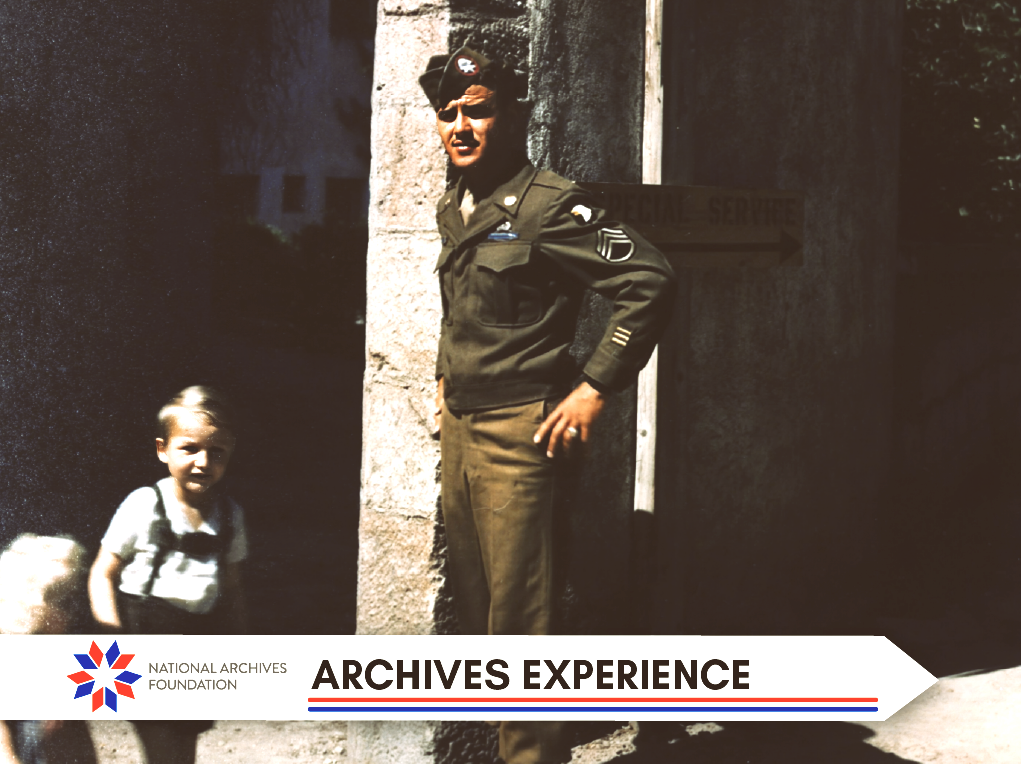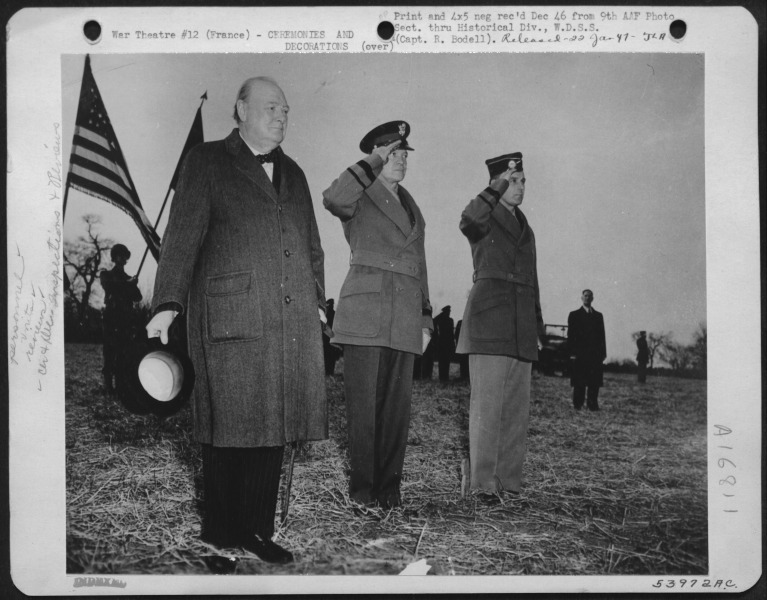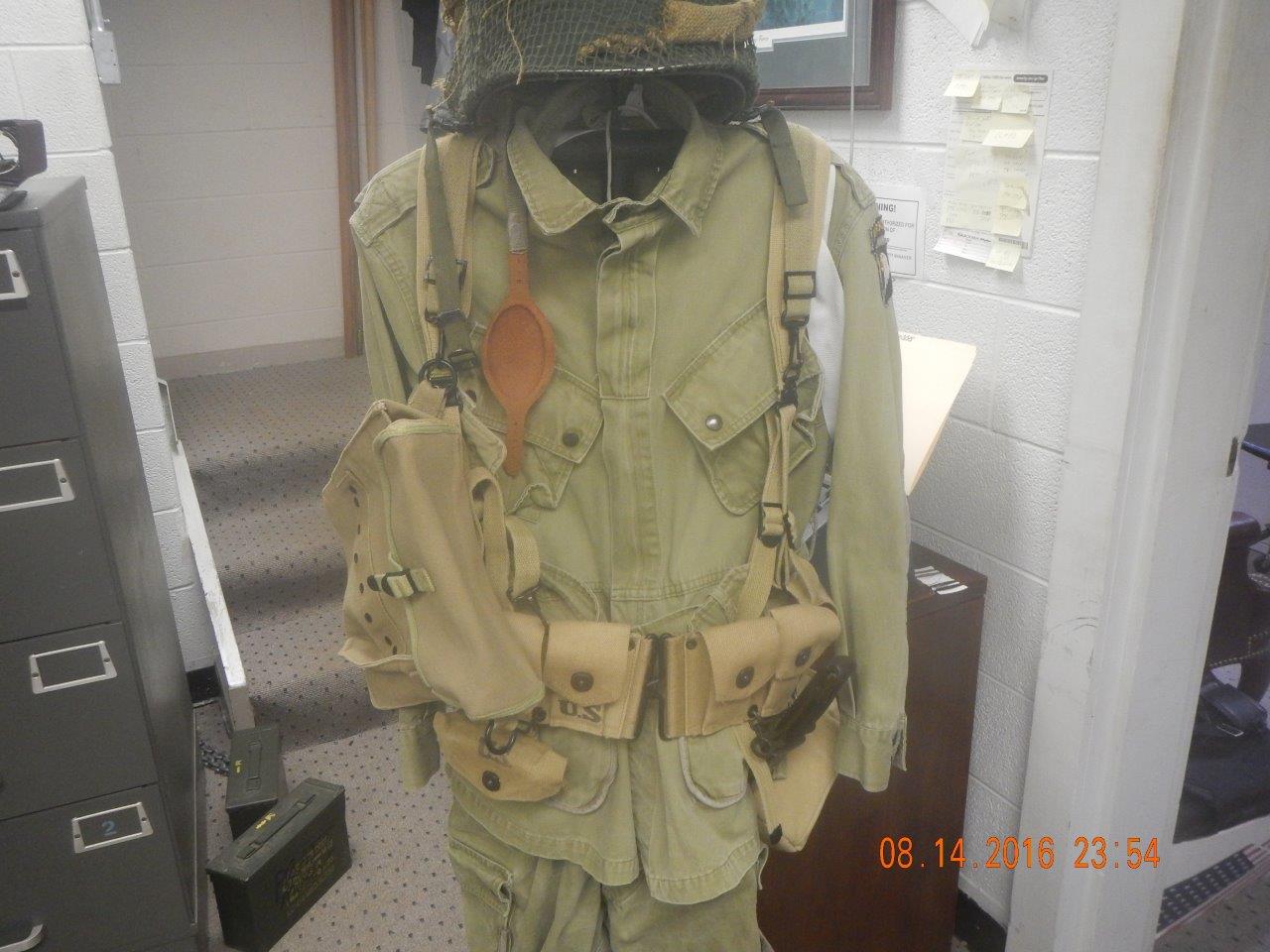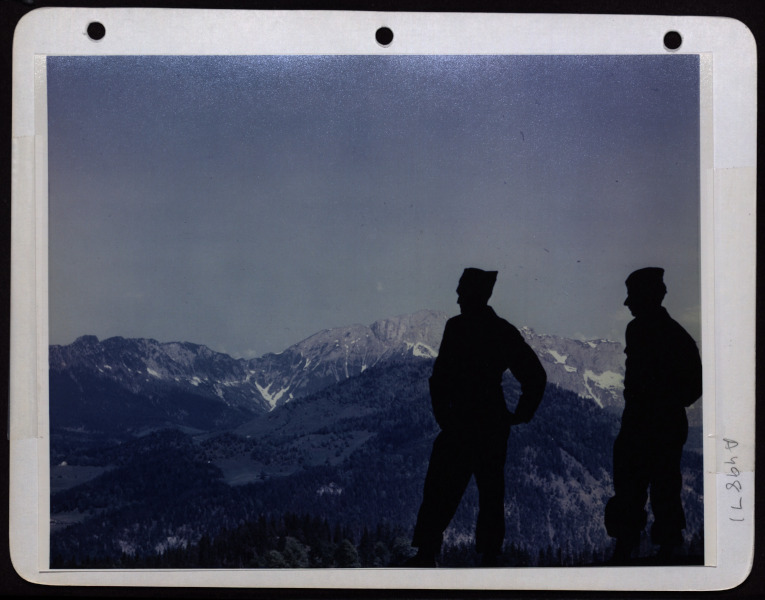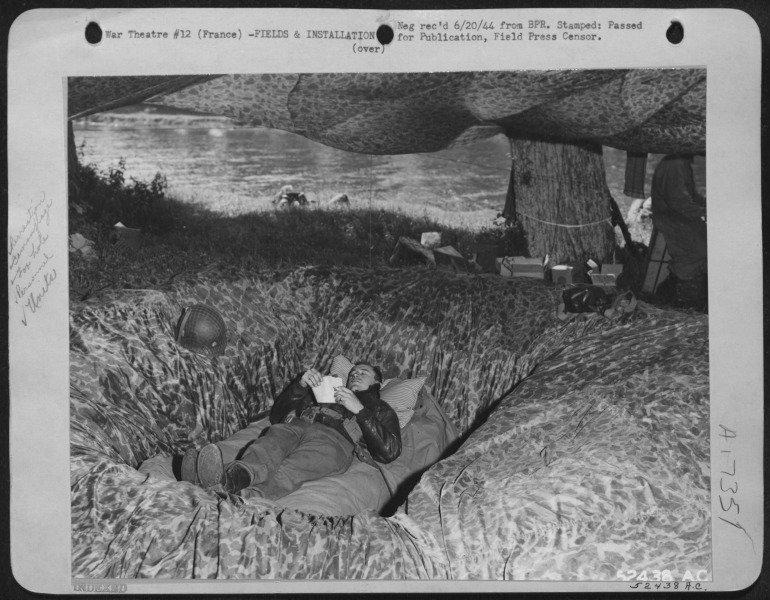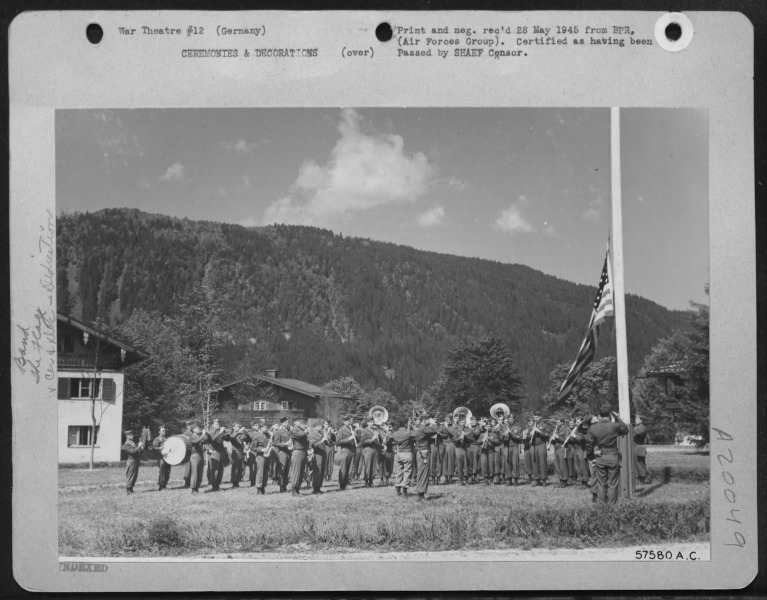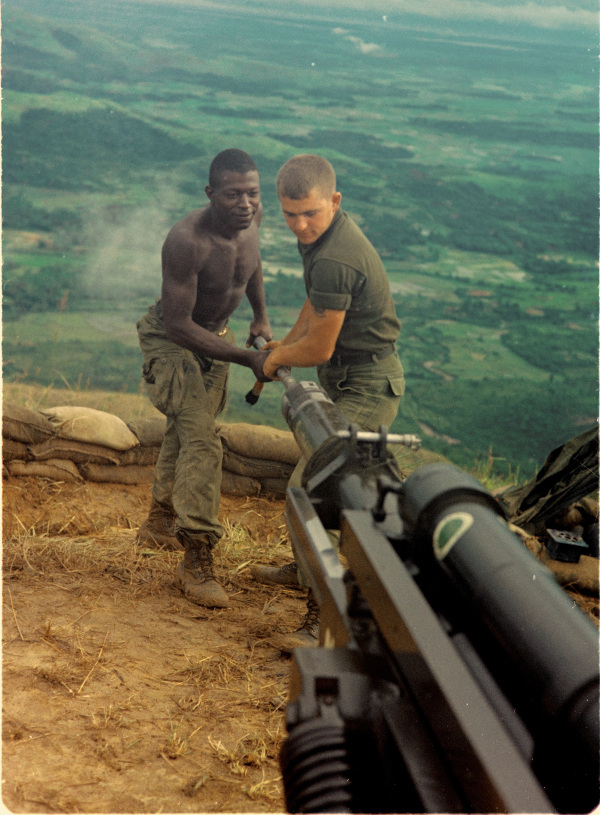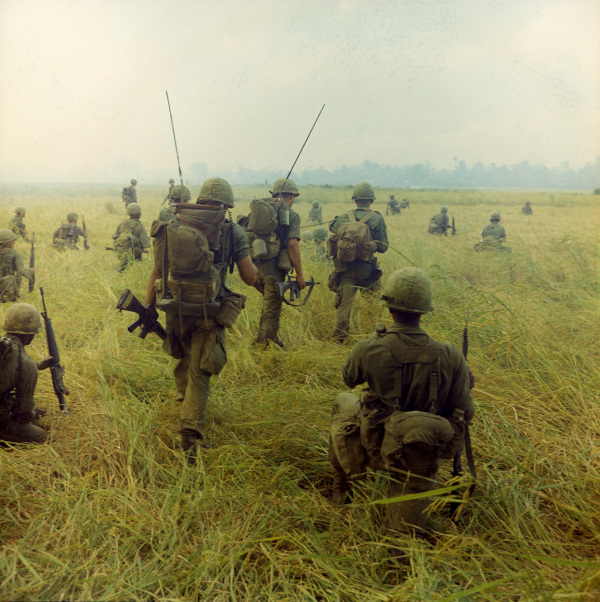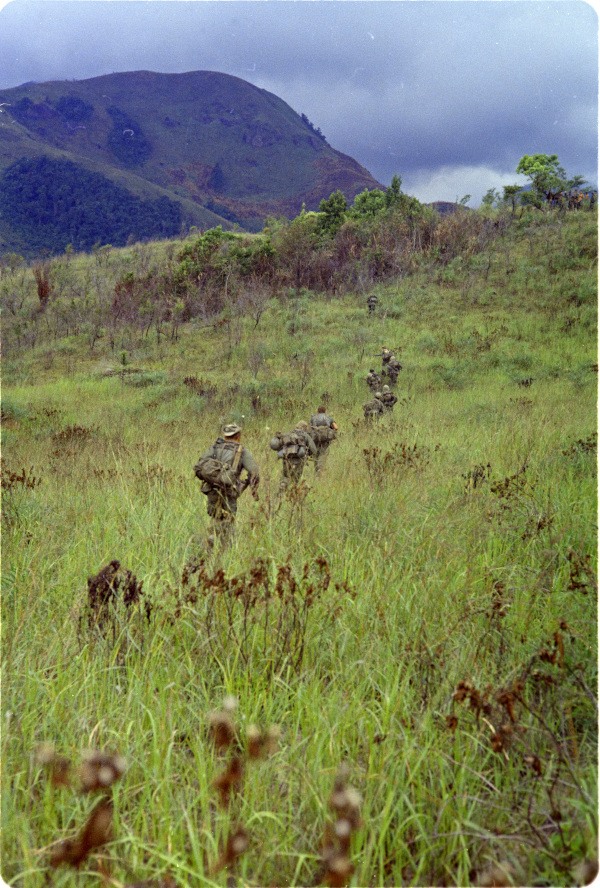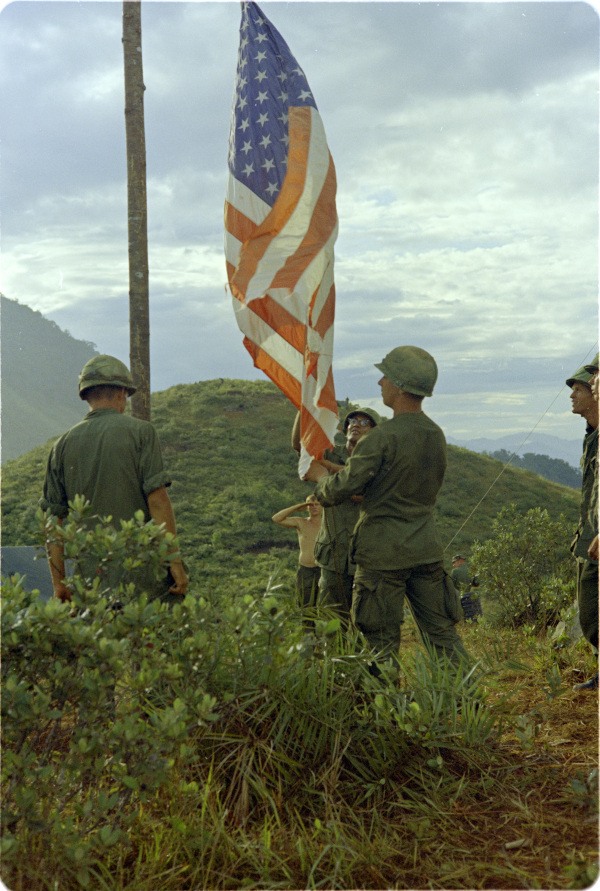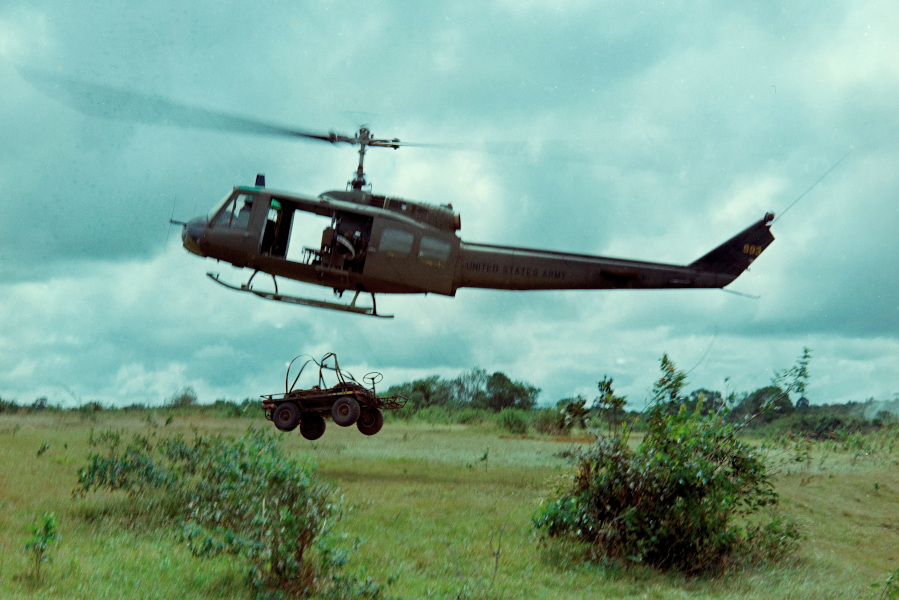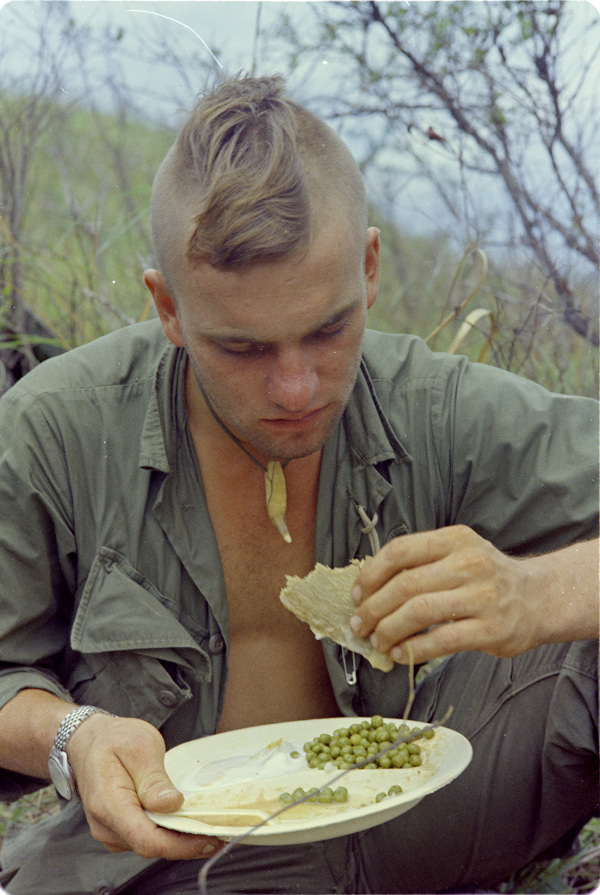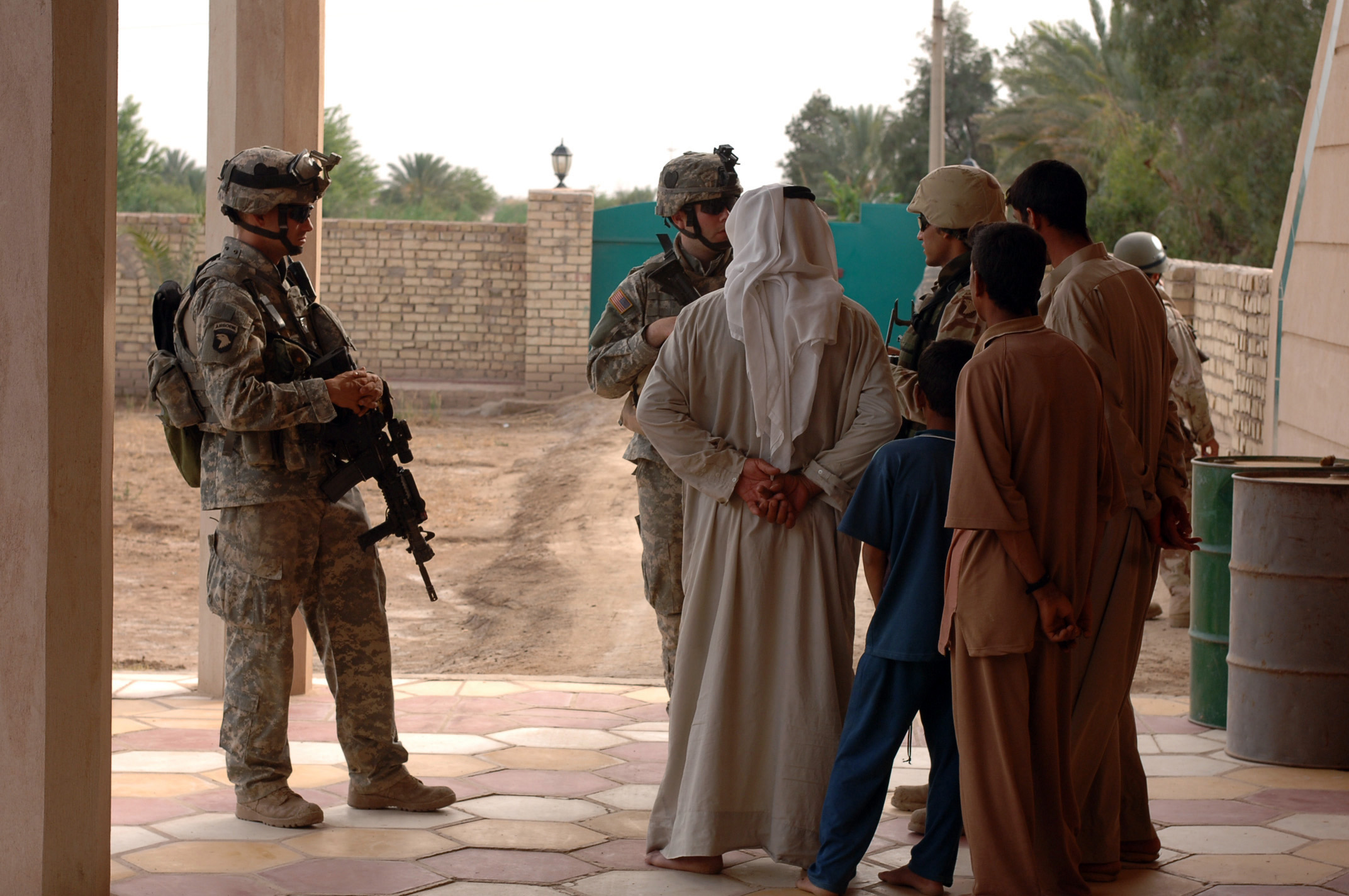Archives Experience Newsletter - May 30, 2023
The Screaming Eagles
The 101st Airborne Division is one of the most famous (and feared) in U.S. armed forces history. From landing behind enemy lines just before D-Day to protecting the first group of Black students to integrate Central High School in Little Rock, Arkansas, the 101st Airborne has taken part in many of the most consequential interventions both at home and abroad.
In this week’s issue, parachute behind Nazi enemy lines, join the charge in Desert Storm, and learn the story behind the unit’s strangest nickname: the “chicken men”…
In this issue
An Optimistic Ending

Shoulder patch: 101st Airborne Division
National Archives Identifier: 6425131
I was shocked and elated when I found out I was going to the 101st Airborne Division because what it meant to me was “The 101st, they’re going to be in a lot of fighting.” And that scared me. The tales and the movies and the patch with the Screaming Eagle on it. But I was so excited to write home to my father and say, “I’m in the 101st Airborne Division. Screaming Eagles.”
—James Bombard
Rifle Platoon Leader
101st Airborne Division
Phan Rang
December 1967 – February 1968
Al Santoli. Everything We Had: An Oral History of the Vietnam War. New York: Random House, 1981
The storied 101st Airborne Division of the United States Army was established at Camp Shelby, Mississippi, on November 2, 1918, but it came to an abrupt ending just nine days later, when World War I ended. In December of that same year, the division was disbanded with the mindset that the Great War had been “the war to end all wars.” It was reorganized as a reserve unit in 1921, at which time it adopted its logo, the “Screaming Eagle.”
Striking Fear
On August 15, 1942, the reserve unit was dissolved, and the next day, the 101st Airborne Division was activated at Camp Claiborne, Louisiana, for the specific purpose of defeating the Nazis powers and ending World War II.
The 101st trained at Fort Bragg, North Carolina, and then in England, in preparation for Operation Overlord, the invasion of Europe on D-Day. On June 6, 1944, the soldiers of the 101st Airborne parachuted into France behind enemy lines to clear the way for the 1st and 4th Infantry Divisions, which had stormed Utah and Omaha Beaches. By September, the paratroopers were fighting their way across Europe to liberate Holland, a mission that took more than two months.
Pulled back to France for a respite, the 101st was abruptly returned to action in the Battle of the Bulge in November 1944. Completely surrounded by German forces at Bastogne, Belgium, the 101st, the African American 969th Artillery Battalion, and Combat Command B of the 10th Armored Division held out despite constant enemy bombardment and sniper fire. In near-Arctic weather conditions, including snow, fog, and freezing rain, until December 26, when the 4th Armored Division of General George A. Patton’s 3rd Army plowed through the enemy lines and relieved the U.S. soldiers. At this point, the 101st Airborne earned the reputation of being the most feared division by the Nazi powers, and even Hitler himself.
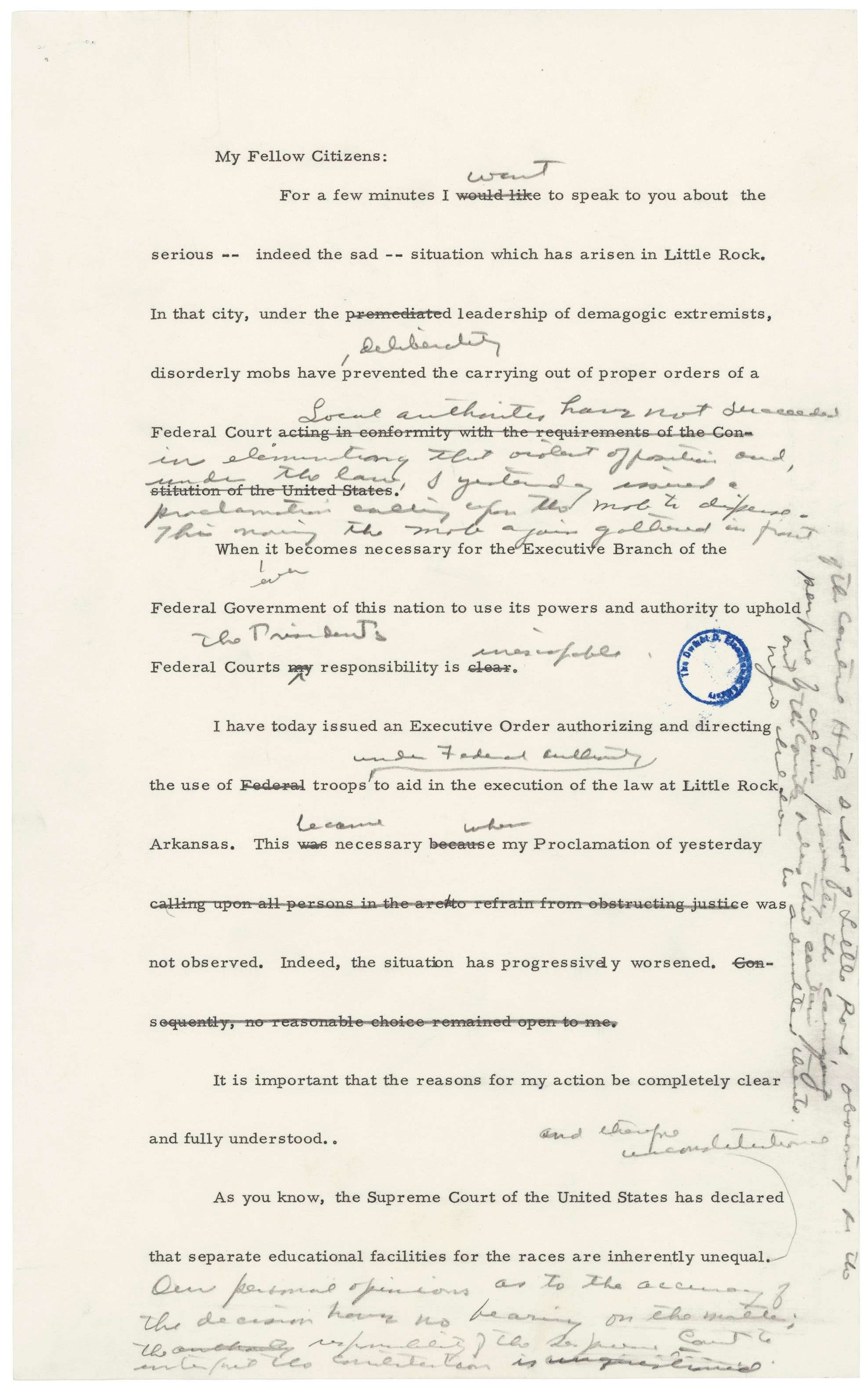
Draft of Dwight D. Eisenhower’s Little Rock speech
Source: NARA’s DocsTeach
The Battle of the Bulge was the bloodiest and costliest of World War II. The U.S. Army alone suffered more than 100,000 casualties, with approximately 19,000 soldiers killed, 47,500 wounded, and more than 23,000 missing. About the same number of Germans soldiers were killed, wounded, or captured. More importantly, the Nazis’ attempt to cut the Allied forces in two at the Ardennes Forest failed, which marked the beginning of the end for Hitler’s attempt to conquer Europe by military force.
The 101st Airborne then fought across Alsace and the Ruhr Valley. In Bavaria, the division liberated the Landsberg concentration camp. Continuing on, they eventually captured Berchtesgaden, where Kehlsteinhaus (the Eagle’s Nest), Adolf Hitler’s mountain retreat, is located. The unit was preparing to be deployed in the Pacific when the war ended. The division was inactivated on November 30, 1945.
The 101st Airborne did not see significant military action again for 30 years, although in 1957, President Dwight D. Eisenhower activated the 1st Airborne Battle Group, 327th Infantry, to Littler Rock as Operation Arkansas, where the soldiers escorted the “Little Rock Nine”—the first Black students admitted to high school in the state—to Central High School to protect them from protesters.
A Nomadic War
At the start of the Vietnam War, on July 29, 1965, the 1st Brigade of the 101st landed at Cam Ranh Bay. The rest deployed to Vietnam in December 1967. The Screaming Eagles earned the nickname “the nomads of Vietnam” because they fought all over the country. Altogether, they fought in 45 operations spanning seven years. Seventeen members of the 101st Airborne received the Congressional Medal of Honor for their conduct in combat in this conflict. The unit officially came home to Fort Campbell on April 6, 1972.
The 101st Airborne suffered heavy casualties during the Vietnam War despite their combat expertise. 4,011 were killed in action, and 18,259 were wounded. This was over twice the amount of soldiers lost during WWII from their unit. One of the most grueling battles the unit participated in was the battle of Ap Bia Mountain. It was a controversial battle, as the hill had no real strategic importance, but the fight for control over it lasted a miserable 10 days. The carnage wracked up on both sides of the battle earned the site the grim nickname, “Hamburger Hill.” After 11 brutal assaults on the Vietcong, the 101st Airborne forces finally gained control of the hill, only to abandon it days later due to its lack of value.
The Vietnam War earned the 101st Airborne division another name. Viet Cong noticed the distinctive eagle patches on the 101st Airborne uniforms, and mistook the eagles for chickens. They often communicated to each other to avoid the “chicken men” at all costs.
Behind the Lines
The 101st Airborne deployed to Saudi Arabia in operations Desert Shield and Desert Storm in late 1990, firing the first shots of Desert Storm and making the longest and largest air assaults in history. A ceasefire was declared on February 28, 1991, and the unit was home on May 1 of that year. They not only fired the first shots of the Gulf War, but they also pushed 155 miles behind enemy lines, making their campaign in Iraq the deepest air assault operation in history.
The 101st also served in humanitarian operations in Somalia in 1992 and 1993, and supported U.N. peacekeeping operations in Bosnia, Kosovo, the Sinai, Haiti, and Panama throughout the 1990s. Since the 9-11 attacks in the U.S., the Screaming Eagles have been deployed to Afghanistan, Kuwait, and Iraq several times.
As part of Operation Atlantic Resolve, the 2nd Brigade Combat Team of the 101st Airborne was sent to Europe for the first time since World War II. The air-assault team arrived in Romania, complete with all their equipment, in October 2022, “ready to fight tonight” should Russia encroach on NATO’s eastern border in its fight with Ukraine.
“We’re ready to defend every inch of NATO soil,” Brigadier General John Lubas told CBS News. “We bring a unique capability, from our air assault capability….We’re a light infantry force, but again, we bring that mobility with us, for our aircraft and air assaults.”
Over its 80-plus year history, the 101 Airborne Division has transformed itself from solely an infantry unit to a light infantry division that specializes in air assaults. It is uniquely qualified to quickly move massive numbers of troops and huge amounts of equipment in very short order into combat situations with difficult terrain and little to no infrastructure. It has continuously evolved with the times and technology, changing, for instance, from primarily relying on airplanes in the 1940s to helicopters as its main means of transport in the 1970s.
The 101st Airborne is swift, nimble, and feared by its opponents. Consequently, it is one of the first units to be sent into battle, “the tip of the spear,” as former Secretary of State Robert Gates once called it.




